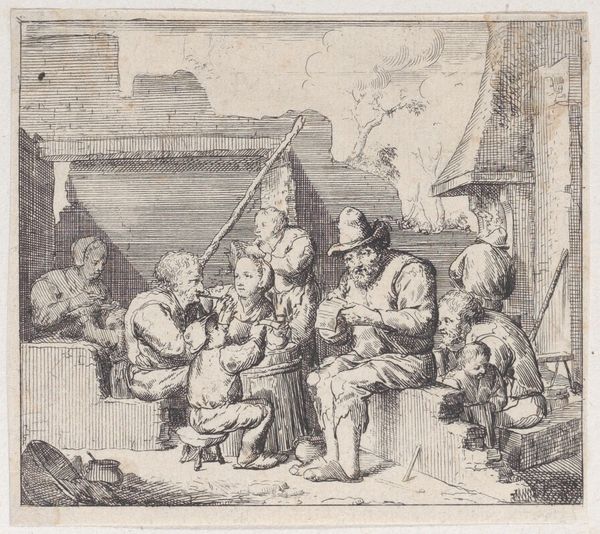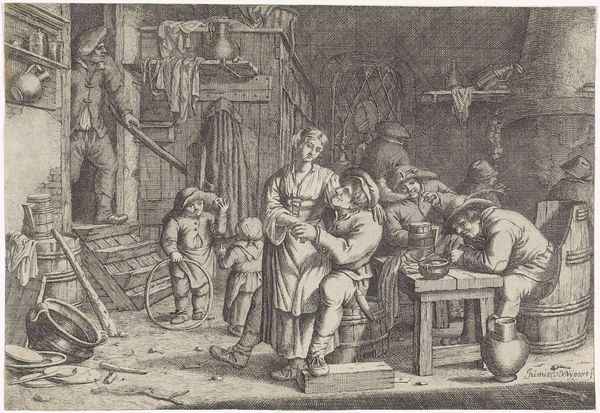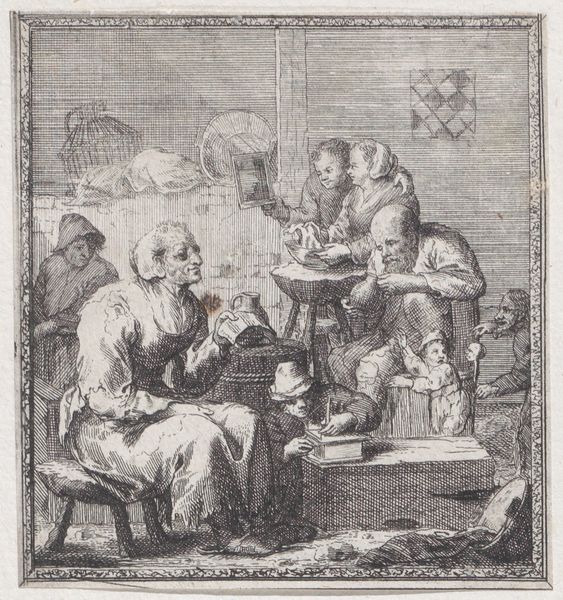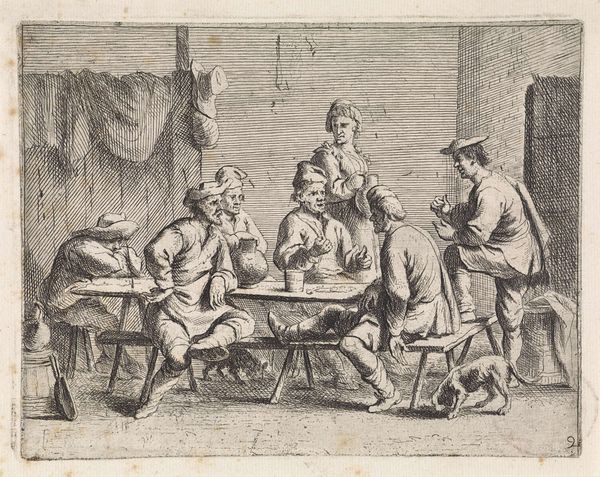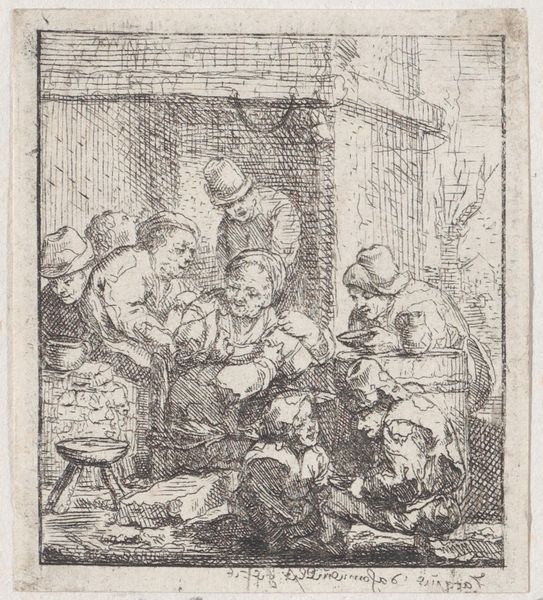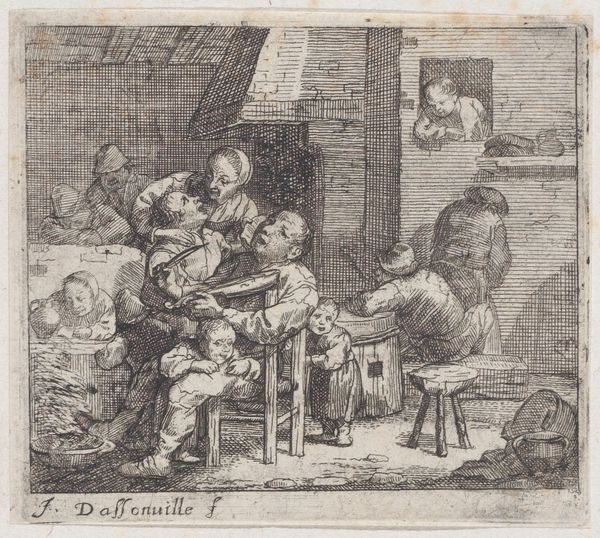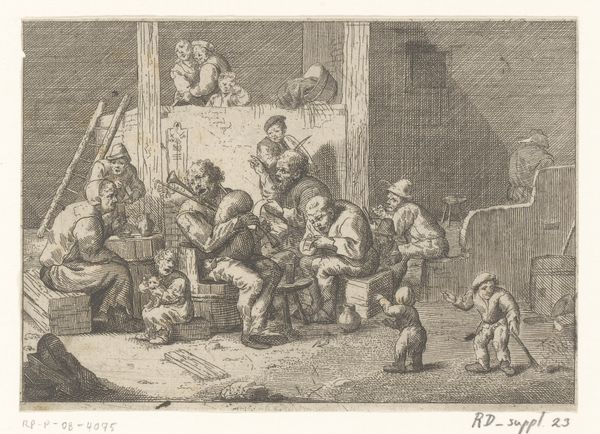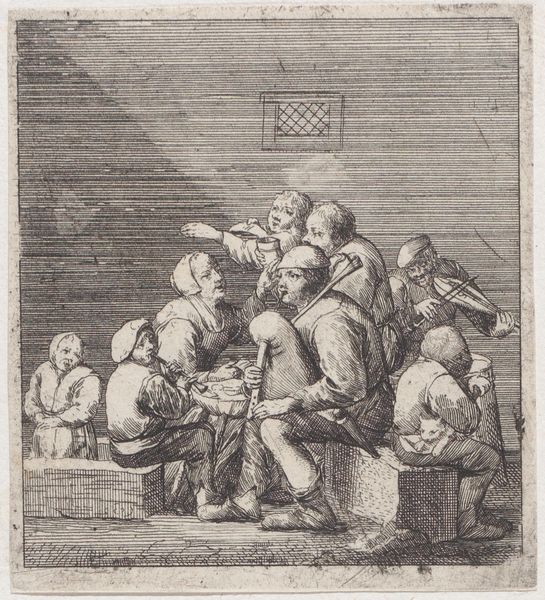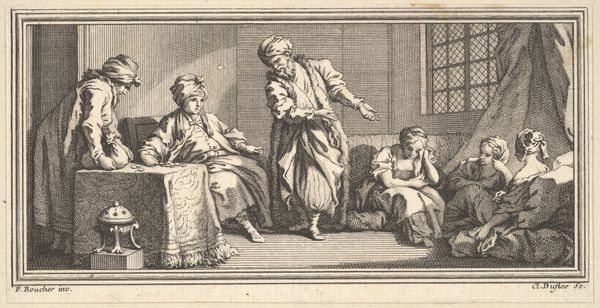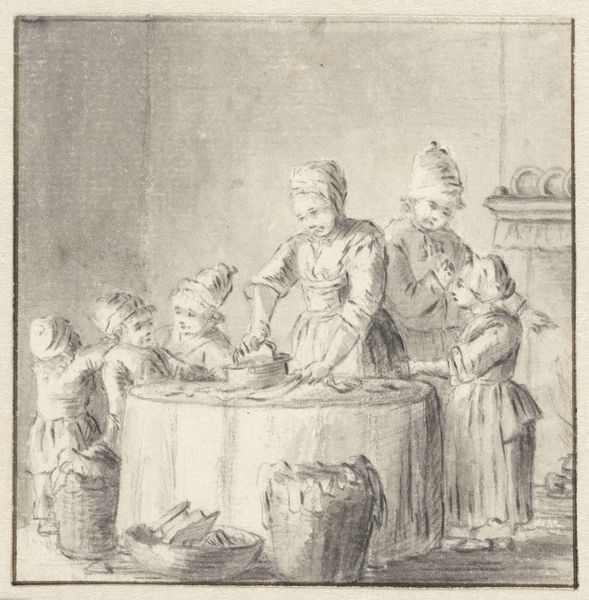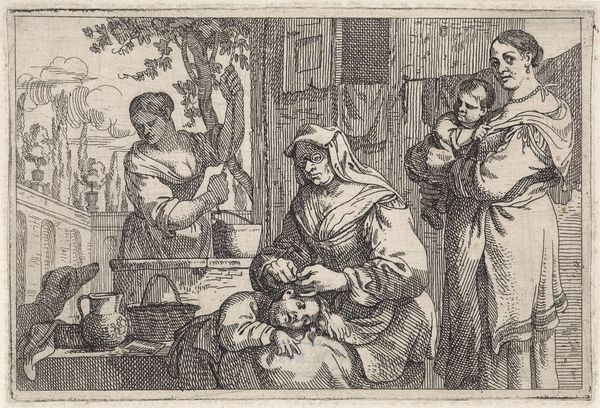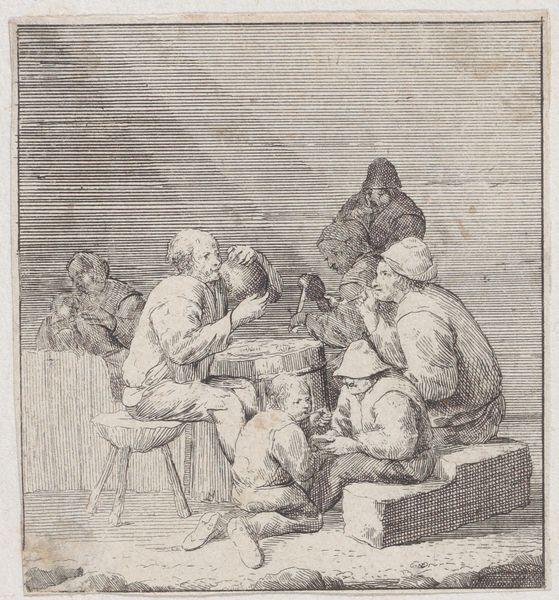
Peasant woman, seated, and cooking, with three children and a man around her 1635 - 1675
0:00
0:00
drawing, print, engraving
#
drawing
#
narrative-art
#
dutch-golden-age
# print
#
figuration
#
genre-painting
#
engraving
Dimensions: Sheet (Trimmed): 3 3/8 × 3 1/16 in. (8.6 × 7.8 cm)
Copyright: Public Domain
Curator: Jacques Dassonville created this piece, "Peasant woman, seated, and cooking, with three children and a man around her" sometime between 1635 and 1675. It is a print, specifically an engraving, now residing here at the Metropolitan Museum of Art. Editor: Immediately, what strikes me is the depiction of labor—the repetitive action of cooking enacted by the mother, the simple, almost rudimentary implements, and the clear visibility of daily life's constraints. Curator: This aligns with the Dutch Golden Age genre painting style. The image seems to be saying something about the social dynamics of 17th-century peasant life, highlighting family structures and maybe gender roles, don't you think? Editor: Yes, the image provides a lens onto those dynamics. What I find really compelling is how the production process—the creation of food from basic ingredients—mirrors the artist's own process of creating an image using simple tools and materials. Curator: Do you mean to highlight the potential of elevating a simple scene, rooted in hard work, and making it visible and therefore valuable? Because what is considered valuable and what labor is celebrated is historically skewed based on class, gender, and other aspects of social standing. Editor: Exactly. This is no idyllic landscape, nor a royal portrait. It's about making the invisible visible. You see the labor etched into every line of this print, every scratch in the metal. It reminds you of the material effort that went into its creation, the labor behind art itself. Curator: Considering that context makes me think about how access to resources and visibility differed immensely for women and those from lower economic statuses, making art depicting them an unusual act. But also perhaps the print would serve different function within such a group. Editor: Possibly. Engravings like these often served practical purposes. But here it serves as documentation of labor. The very process of creation seems to echo and honor that labor, suggesting its importance, or at least its pervasiveness, in this particular society. Curator: It's interesting to view it from this material perspective and understand how the actual artistic methods used connect so deeply to the subject portrayed. Editor: Yes. Looking closer makes one see the reflection of social effort not only in the portrayed family but the work it must have taken to portray them.
Comments
No comments
Be the first to comment and join the conversation on the ultimate creative platform.
